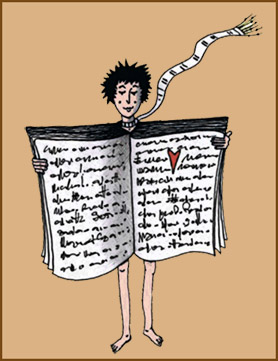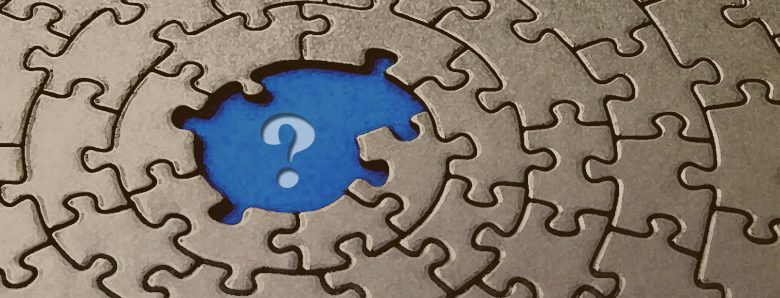Our “story”
The creation of a past
For every person, the biggest obstacle to inner freedom is their ‘story’ (or ‘narrative’).
This applies to everyone, from king to pauper.
When studying the essence of advaita, you realize that the ‘I’ we experience daily is essentially an illusion. Our identity, which we believe in, is not only a colorful collection of selves that seamlessly alternate, but we also believe in the binder between all these selves, which together form our individually experienced ‘I’. However, this is merely an experience within our human psyche. The binder between these many selves, with their ideas, pursuits, and desires, is also the maintainer and enhancer of our psyche and everything this psyche can suffer from. This binder is our ‘story’.
Our story starts from birth, as we experience events that write this story. Pleasant and unpleasant things. Every experience strong enough becomes part of our personal story. Day by day, month by month, year by year, we write our story about who we supposedly are, what we supposedly mean, how we should react to other stories, how we should act, feel, and think. A story also about ‘how we would be’, ‘how the world is’, and ‘how things should be different’. This story – the sum of everything we learned, experienced, and what we have learned to ‘want’, and started to believe in – is what many call the ego. However, this is a broad term that everyone interprets differently.
The term ego is therefore not suitable because it is often used to name aspects that do not belong to the ego but belong to our beautiful human capabilities. Therefore, a term like ‘story’ is better (the fashionable word now is ‘narrative’) as it shows how we shaped it ourselves, making it clearer to see that it’s illusory: a mix of past moments, experiences of them, and imaginations about them. The story reinforces all our mini-identities, all the selves that arose within us (those that want something, or not), connecting and empowering them. Our story contains all our identifications. This way, an increasingly stronger illusory ‘I’ arises, with all the ideas and feelings of separation that come with it.
In the teachings of advaita, we are told that this ‘I’ is an illusion. This ‘I’ simply exists as an idea in our mind. We ourselves ‘wrote’ this ‘I’, and since we have a psyche, we started to believe in it. We believe that this ‘I’ is true. The advaita teachings tell us that only the Self is true. And this Self is the same in everyone. This Self in us can be observed as the neutral Observer, thanks to the fact that as humans we have a self-reflective mind that can impartially observe. What is not the same in everyone is essentially not True. This means that our story cannot be true. No matter how beautiful or ugly our story has become over the years, it is not true because that individual ‘I’ does not exist in the True world of advaita. The True I is Consciousness Itself.
We cannot be what we perceive for
we are That ( Tat तत् ) which perceives
No one
The fact that the individual ‘I’ does not exist can be experienced at moments when we are thoughtlessly present in the Now. When we purely perceive in the Now, without judgment, such as when experiencing nature, we experience pure egolessness. There’s only observation, nothing more, by the Self, the Consciousness, observing. As soon as you think ‘hey, I find this beautiful’, our self-reflective mind adds an ‘I’ stating ‘I observe and I find beautiful’. This results – after a moment of egolessness – in a renewed experience of the self and possibly a new piece of story.
If we’ve experienced much pain in our life, endured many painful situations in past and present circumstances, our story may have become filled with fragments and chapters of pain. By believing in our story, with our psyche that constantly adapts to every situation, the pain is felt more intensely. But by starting to experience that we are only That, which observes – pure consciousness – we increasingly understand what it means to be the Self. The Self that is completely devoid of story, completely neutral, and completely pure. This doesn’t mean that we won’t feel pain or suffer. After all, we are a human individual, a human manifestation of that absolute Self with an emotional world that can also be observed, just as our thought world and body movements can be observed.
We don’t need to erase our story, which is impossible, but we can believe in it less and less. We started believing because no one ever told us that we are more than all those selves with the connecting story that continues to empower them. We increasingly see the story for what it is, a constructed illusion. We often realize that when we are in the Now, purely as an observer (like observing a piece of nature mentioned earlier), we don’t experience a story, old pain, whimsical thoughts, any kind of ‘I’, and we are at peace. As soon as our self-reflective mind adds an ‘I’ to it, thoughts and feelings emerge that somewhat take over the experience of the Now. This can be perceived positively as ‘how beautiful’, but also negatively as ‘it’s a pity this nature is getting ruined’ or similar. The pure Now-experience of a neutral ‘what is’ gets pulled into our story. If there’s much negativity, it can bring about or evoke feelings of suffering. The neutral Now-observation of the Self disappears, and in its place comes the re-creation of the self-story with all the feelings and thoughts that accompany it, thus empowering it again.
 Getting to know Advaita provides us the possibility to no longer believe in our story. That’s why many Advaita followers say there’s ‘no one’ and that every sense of self is a lie (which can become part of their story for Advaita dogmatists, as has been shown).
Getting to know Advaita provides us the possibility to no longer believe in our story. That’s why many Advaita followers say there’s ‘no one’ and that every sense of self is a lie (which can become part of their story for Advaita dogmatists, as has been shown).
The philosophy of Advaita teaches us that only Consciousness exists, expressing itself in myriad transient forms and manifestations (physical, subtle, and causal). In that case, our story is also an expression of the Self (in the subtle world of the mind), but nothing more than that. Every expression of the Self is temporary (a body, a mind, a feeling, a thought, a story) while the Self as its source is eternal and imperishable. This is described rather archaically in the Bhagavad Gita, but many contemporary books have captured this in more modern terms.
Someone
Selfknowledge.today assumes that there’s no problem in seeing ourselves as ‘someone’, because it’s undeniable that there’s no second version of ourselves as individuals on earth. We are all unique in-dividuals (undivided), so if we manage to realize the unity of the Self within us, in our mind, we truly become undivided without a story, without a self-written past to which we often intensely identify in the hope of being ‘someone’. We then truly become a unique individual with a unique essence and personality. Our story keeps us internally divided and separate from others!
Experiencing the truth of Advaita principles offers moments of intense peace and happiness. Peace and happiness are ‘pop-ups’ in our experience during the moments we realize we are not what we call ‘I’, yet from that perception of being someone who registers this.
Returning to our true Self means coming back to the state of judgment-free observation, in which each ‘past’ loses its power, because in such a judgment-free observation the story doesn’t exist, it can’t exist. We no longer cling to any interpretation of reality, neither ours nor someone else’s. This way, we become an integrity. Peace arises from no longer “being busy” (through thoughts and feelings that “play” with before and after Now) with what causes unrest. And the biggest cause of unrest is our story in which we believe, the history we have assembled about ourselves, the interpretation of reality.’the world according to me‘.
Love and Conscience
Everyone can experience an essential force that belongs to the Essence of the Self: Love.
Feelings of love arise in our entire human system during those (rare) moments of peaceful observation in the Now, without the ‘I-story sauce‘ overlay. Then it just appears: peaceful love, like an inexplicable and unexplainable pop-up in our individual perception and experience at that moment. You might feel this, for example, when handed a baby. Love suddenly becomes observable and tangible. And love never lies.
From this power of love, there is also the equally incomprehensible and unexplainable Conscience that can be triggered, given to truly everyone, but may be more or less (or even completely) shielded by the story in the psyche (or by spiritual limitations in someone’s individualized essence). The Conscience always speaks Truth to us, as it’s the ‘alarm’ that love sets off in incorrect situations. Conscience never lies either!
From this Conscience, we can experience injustice in situations, without any personal story underlying it. And this injustice might even cause us pain, or make us resist. Love and conscientiousness come from our Ahamkara, our attachment instrument, which equips our human mind as a social being. It’s focused on natural attachment and connection and therefore reacts strongly to everything that violates this. This very Ahamkara makes us grieve or mourn the loss of loved ones, makes us feel compassion and empathy for the pain of others. It triggers intense emotions within us. All entirely separate from any story. Such a pure world of emotions makes us real humans.
But when we pull our story into it, which usually happens completely automatically because we don’t notice it, genuine emotions can become intense sentiments, or worse: genuine emotions are overruled by opinions, antipathies, and identities causing separations. Then, conflict can easily arise.
Only the surface of the ever clean Now
offers truly intense and awake experiences
No More Conflicts
If we no longer believe in our own story or that of others, this does not mean that we shouldn’t have compassion for someone suffering under their story. On the contrary. It also doesn’t mean that we shouldn’t enjoy when someone expresses their beautiful story in any way.
Confirming someone’s negative story with our own experiences is unwise and very counterproductive. Contradicting someone’s story is also not beneficial. Embracing the story as something valuable isn’t helpful either.
Interpreting someone’s story as something that can’t possibly be true and therefore always falls short of someone’s true stature is the only thing we can do, even though almost no one will immediately want to believe you because no one was taught this. Many conflicts are clashes between stories, between illusory concepts or imaginations that are embedded in numerous ‘I’s and to which we attribute value.
What’s truly needed is a revaluation of all those small ‘I’s and an unmasking of our story, allowing us to distance ourselves from it. Additionally, what’s needed is an introduction or revaluation of the Eternal non-dual Self, which is our true nature, and from which we’ve been estranged under thick layers of stories we’ve come to believe from an early age (either because we’ve constructed them ourselves or because they were imposed on us by others). Then, every inner conflict disappears, and conflicts with others rapidly decrease.
The Art of Being “Superficial”
Why is being “superficial” with others so important?
Because interacting “superficially” is independent of any personal story. Our experience is “superficial” when it takes place on the “surface” of the ever-pure Now, without roots in a past story of not-now. Rootless, new, neutral, light, free from story baggage. A peaceful experience of “what is” without more. Our personality naturally flows in full gear in the game of communication and interaction with others. We bring out the best in ourselves, because we know what the best in us is! You naturally experience a peaceful love in “superficial” togetherness, especially when there is an overriding sattvic silence in our mind. Of course, this isn’t superficial in the usual sense of the word, but deeply fulfilling and meaningful.
The art is to maintain this “superficiality” when our experience in the moment becomes “heavy”, for instance when something from someone’s story addresses us and triggers our own not-yet-understood and abandoned story. Or, for example, when our Conscience experiences injustice (which is very different from experiencing injustice from our story). The art is to maintain peaceful and playful lightness by purely observing in the Now, devoid of story. For instance, when someone wants to impose their story on us as the reality. And old issues should always remain in the past, unless you mutually decide to peacefully explore them, thus definitively burying them in the illusory past.
Every time we “return to ourSelf”, we detach from our story. We also detach from any story of others. We no longer believe in both. We arrive at a state of rest where stories don’t matter. It’s a “homecoming”. Coming home to an inner state of neutral observation where there’s much beauty to experience. And this story-free Now always offers peace, because there’s no judgment in it. The fact that we often “fail” and are subject to feelings and thoughts with all their turmoil is no reason not to continuously adhere to the advaita principle, wherein every duality can dissolve by rediscovering the Self.
Spiritual Action
So, keep trying and practicing this, as it’s a permanent exercise in not believing and engaging in stories, especially not our own with all its wishes, needs, desires, and countless wills arising from them. All of these we can surrender and dedicate. So keep doing this, over and over again, to no longer believe in falsehood, to no longer believe in anything that diminishes you compared to the Self itself. If the Kingdom of God is within us, as Jesus might have said, then that Kingdom within ourselves must be conquered! Or rather: reclaimed, by no longer believing, honoring, pursuing, and certainly not ignoring everything that stands in the way of our kingship.
True spirituality essentially “throws a wrench into the works”. This is essentially what the charioteer Krishna said in the Bhagavad Gita: “Arjuna, go for it now! You have your life’s mission to follow”. This means we no longer negotiate with the “family members” within us, who form the armies trying to keep us from our Destiny. Kick out the merchants (those who negotiate with the truth) from the Temple! Like Frodo, throw the ring of identification back into the volcano’s fire! Defeat your dragon like St. George! This is our mission in life, once we realize that both the material world and our psyche story, which often gets us “soaked”, don’t matter. If we realize that only one thing truly matters, for you, for me, for everyone: Being MySelf, with no additions, in full self-expression and bloom.
.

 We can refer to memories we still have from before we turned 10 years old. The fragments we can still recall have a certain uncomplicated clarity that can provide insight into how we observed and experienced things in situations with an unbiased Now-awareness back then.
We can refer to memories we still have from before we turned 10 years old. The fragments we can still recall have a certain uncomplicated clarity that can provide insight into how we observed and experienced things in situations with an unbiased Now-awareness back then.
